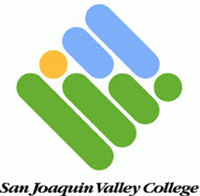What do they do?
File correspondence, cards, invoices, receipts, and other records in alphabetical or numerical order or according to the filing system used. Locate and remove material from file when requested.
Also known as:
Claims Clerk, Clerk, Documentation Specialist, File Clerk, Filing Clerk, Keyboarding Clerk, Manufacturing Clerk, Medical Records Clerk, Office Assistant, Police Records Clerk, Records Clerk, Records Specialist, Support Technician
-
-2.5%
Change
Ranks #43 in job growth rate260Job Openings
Ranks #13 in net job growth
Looking for colleges that offer a specific major? Use the College Match Tool to find your best-matched schools and discover your estimated Net Price!
- Some college, no degree (29%)
- High school diploma equivalent (26%)
- Bachelor's degree (20%)
- Associate's degree (14%)
- Master's degree (5%)
- Less than high school diploma (4%)
- Doctorate or Professional Degree (1%)
People in this career often know a lot about:
- Administrative - Knowledge of administrative and office procedures and systems such as word processing, managing files and records, stenography and transcription, designing forms, and workplace terminology.
- English Language - Knowledge of the structure and content of the English language including the meaning and spelling of words, rules of composition, and grammar.
- Computers and Electronics - Knowledge of circuit boards, processors, chips, electronic equipment, and computer hardware and software, including applications and programming.
- Customer and Personal Service - Knowledge of principles and processes for providing customer and personal services. This includes customer needs assessment, meeting quality standards for services, and evaluation of customer satisfaction.
People in this career often have talent in:
- Information Ordering - The ability to arrange things or actions in a certain order or pattern according to a specific rule or set of rules (e.g., patterns of numbers, letters, words, pictures, mathematical operations).
- Written Comprehension - The ability to read and understand information and ideas presented in writing.
- Category Flexibility - The ability to generate or use different sets of rules for combining or grouping things in different ways.
- Near Vision - The ability to see details at close range (within a few feet of the observer).
- Oral Comprehension - The ability to listen to and understand information and ideas presented through spoken words and sentences.
- Oral Expression - The ability to communicate information and ideas in speaking so others will understand.
- Written Expression - The ability to communicate information and ideas in writing so others will understand.
- Perceptual Speed - The ability to quickly and accurately compare similarities and differences among sets of letters, numbers, objects, pictures, or patterns. The things to be compared may be presented at the same time or one after the other. This ability also includes comparing a presented object with a remembered object.
People in this career often do these activities:
- Read materials to determine needed actions.
- Enter information into databases or software programs.
- Sort mail.
- Operate office equipment.
- Type documents.
- Compile data or documentation.
- Verify accuracy of financial or transactional data.
- Provide information to coworkers.
- Maintain inventory records.
- File documents or records.
- Search files, databases or reference materials to obtain needed information.
- Track goods or materials.
- Store items.
- Store records or related materials.
- Examine documents to verify adherence to requirements.
- Attach identification information to products, items or containers.
- Develop data analysis or data management procedures.
This page includes data from:

 Occupation statistics: USDOL U.S. Bureau of Labor Statistics Occupational Employment Statistics
Occupation statistics: USDOL U.S. Bureau of Labor Statistics Occupational Employment Statistics
 Videos: CareerOneStop, USDOL/ETA and the Minnesota Department of Employment & Economic Development
Videos: CareerOneStop, USDOL/ETA and the Minnesota Department of Employment & Economic Development








